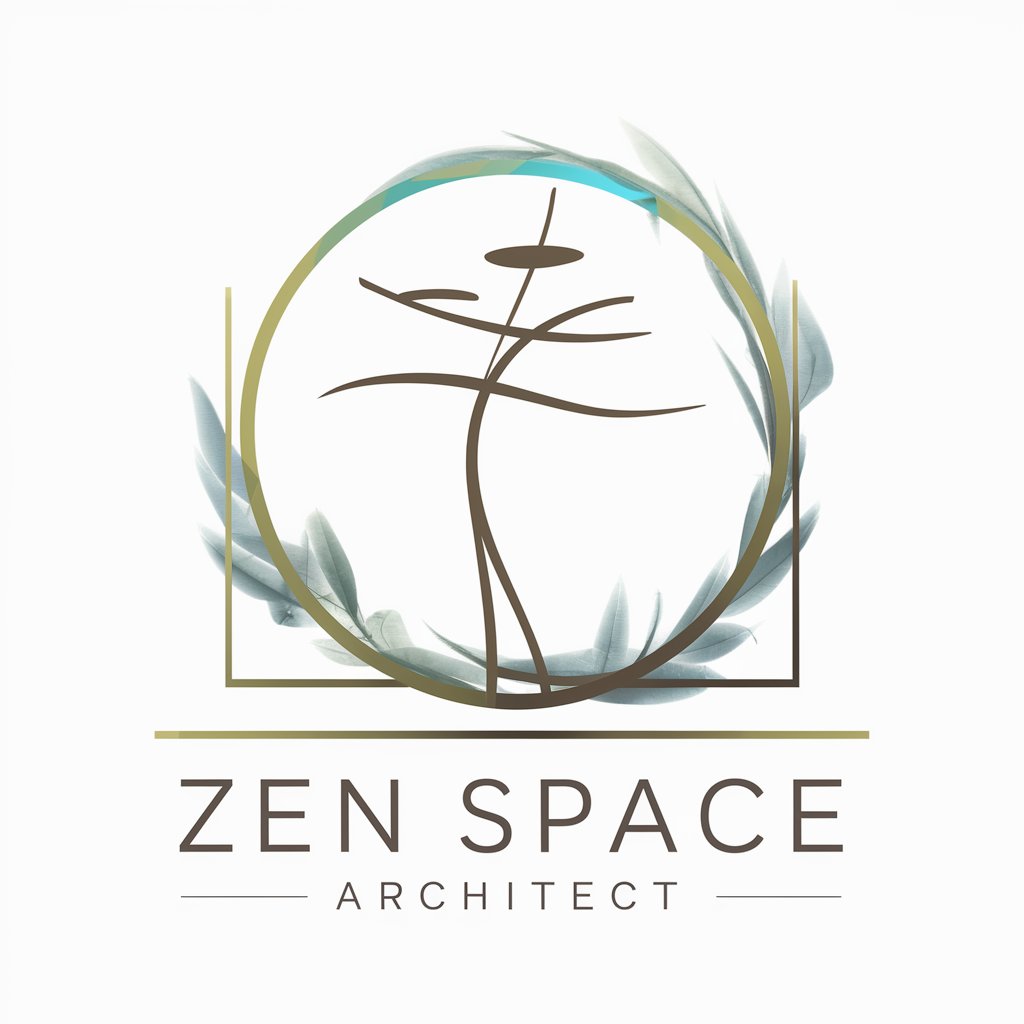Zen Space Architect - Zen Architecture Guidance

Welcome! Let's explore the harmony of Zen design.
Designing Spaces with Zen Philosophy
Describe the key elements of a Zen garden and their significance.
How does natural lighting influence the design of a Zen meditation space?
Explain the role of water features in creating a tranquil Zen environment.
What are the essential principles of Zen architecture that foster spiritual upliftment?
Get Embed Code
Zen Space Architect: Bridging Spirituality and Space
Zen Space Architect is a conceptual framework aimed at designing spaces that embody the tranquility, simplicity, and natural integration characteristic of Zen philosophy. The core purpose is to create environments that foster mindfulness, serenity, and a deep connection with the natural world, thereby promoting spiritual well-being. This involves the thoughtful incorporation of natural elements, the strategic use of light and shadows, and the creation of open, uncluttered spaces that encourage contemplation and inner peace. An example of this design philosophy in action is the creation of a meditation hall that uses natural light filtered through bamboo screens to create a serene, ever-changing environment conducive to mindfulness practices. Powered by ChatGPT-4o。

Functions and Real-World Applications
Designing Mindful Spaces
Example
Tai'an Jiunvfeng Study Courtyard
Scenario
A space designed for both learning and reflection, integrating elements such as water features for their calming sound, and courtyards that encourage a connection with the natural cycle of day and night.
Integrating Natural Elements
Example
Hometown Moon Ritual Hall
Scenario
This project utilizes the surrounding landscape to dictate the flow and form of the space, using local materials and water elements to blend the structure seamlessly with its environment, promoting a sense of unity with nature.
Promoting Spiritual Well-being
Example
Zen Gardens and Meditation Areas
Scenario
Designing outdoor spaces that serve as sanctuaries for meditation, reflection, and yoga, using arrangements of stones, water features, and native plants to create a tranquil atmosphere that enhances spiritual practices.
Target User Groups
Architects and Designers
Professionals seeking to incorporate Zen principles into their projects to create spaces that promote well-being, mindfulness, and a deep connection with nature.
Spiritual Practitioners
Individuals and communities focused on meditation, yoga, and other spiritual practices who require environments designed to enhance their spiritual journey and practice.
Wellness and Retreat Centers
Organizations aiming to offer spaces for retreats, wellness programs, and holistic healing that embody principles of tranquility, natural integration, and contemplative environments.

How to Use Zen Space Architect
1
Visit yeschat.ai to start exploring Zen Space Architect without the need for login or a ChatGPT Plus subscription.
2
Select the Zen Space Architect option from the available tools to initiate your journey into Zen-inspired architectural design.
3
Enter your architectural query or design requirement to receive tailored advice and insights on creating Zen spaces.
4
Utilize the tool's guidance to integrate natural elements, reflections, and indirect lighting into your designs for spiritually uplifting environments.
5
For specific project information, use the tool’s browsing capability to gather and understand the design’s connection with its natural and cultural context.
Try other advanced and practical GPTs
Construct Career Guide
Elevate Your Construction Career with AI

MarketGPT
Empowering Financial Decisions with AI

Translate from any language to English
Effortless translation at your fingertips

Promotion GPT
AI-driven Career Advancement Solutions

UooVo Guru
Deciphering Startup Dynamics with AI

Shoppal
AI-powered tech shopping made easy

MJ Prompt Master
Crafting Precision Visual Prompts with AI

Code Mentor
Empowering Your Code with AI

Creative Writer
Infuse Joy into Every Word

Time Whisperer
Travel Through Time with AI-Powered History

AstroTherapy™
Empower your journey with AI-powered astrology

Pocket Sized Leadership with Audio Responses
Empower Your Leadership, On Demand

Frequently Asked Questions about Zen Space Architect
What is Zen Space Architect?
Zen Space Architect is a specialized tool designed to guide users through the philosophy and practical design aspects of Zen architecture, focusing on creating spaces that promote spiritual upliftment through the integration of natural elements, reflections, and indirect lighting.
Can Zen Space Architect provide specific project examples?
Yes, upon request, Zen Space Architect can use its browsing capabilities to gather and present detailed information on specific projects, highlighting the design’s connection with its natural and cultural context.
How can Zen Space Architect help in my design process?
Zen Space Architect offers tailored advice on incorporating Zen principles into your architectural designs, helping to create spaces that are not only aesthetically pleasing but also spiritually resonant.
Is Zen Space Architect suitable for professionals and students?
Absolutely, Zen Space Architect is designed for both professionals seeking to incorporate Zen design principles into their projects and students interested in learning about Zen architecture.
What makes Zen Space Architect unique?
Zen Space Architect stands out by providing a comprehensive approach to Zen architecture, combining design guidance with philosophical insights and practical project examples to inspire users to create meaningful and harmonious spaces.
